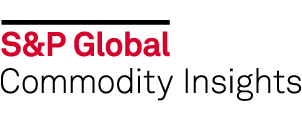
Download Report IHS CEH Report : Hexamethylenediamine-Adiponitrile (Chemical Economics Handbook 2019)
PDF by S&P Global Commodity Insights; IHS Markit
Information
Format: PDF Language: English Pages: 78 Publisher: S&P Global Commodity Insights; IHS Markit Publication Date of the Electronic Edition: 2019
?
ISBN: 92663
$49
Delivery time: Maximum 24 hours
Description
Adiponitrile (ADN) is a key precursor to hexamethylenediamine (HMDA) production. About 90% of HMDA is consumed in the nylon 66 chain, with nonnylon use mostly in hexamethylene diisocyanate (HDI) for high-performance polyurethane paints and coatings, and epoxy curing agents, which have grown strongly in the past five years. HMDA demand has slowly recovered from the 2008 downturn, and is expected to reach a level 14% higher than in 2007. Demand growth for HMDA in Northeast Asia over the last five years was five times the rate of other regions, increasing at an average rate of 10% per year. HMDA demand in Northeast Asia will continue to be a significant driving factor. Asia will remain heavily dependent on exports from western regions despite the start-up of INVISTA's HMDA plant in Shanghai, as this capacity is meant to meet China’s increased demand following nylon 66 and HDI capacity expansions.Adiponitrile (ADN) is a key precursor to hexamethylenediamine (HMDA) production. About 90% of HMDA is consumed in the nylon 66 chain, with nonnylon use mostly in hexamethylene diisocyanate (HDI) for high-performance polyurethane (PU) paints, coatings, and epoxy curing agents, which have grown strongly in the past five years. HMDA demand has slowly recovered from the 2008 downturn, and it is expected to reach 1.62 million metric tons by 2023—14% higher than in 2007.
In 2018, around 74% of adiponitrile was produced from butadiene and the remainder (26%) from acrylonitrile. There has been no production of adiponitrile from adipic acid since 2002–03. The adiponitrile market is controlled by four producers, with INVISTA alone accounting for more than 43% of the global share in 2018. Over the last several years, ADN has been extremely tight in supply as it bumps the upper end of its effective capacity, given the planned and unplanned outages, crimping the supply of downstream HMDA and nylon 66. It led to a significant upward supply/demand price pressure on derivatives as vertically integrated ADN producers increased margins to justify investing in new capacity. World capacity for adiponitrile will be around 2 million metric tons by 2023, an increase of 320,000 metric tons from 2018.
Adiponitrile is produced in the United States, Western Europe, and Japan. US capacity currently stands at around 1.2 million metric tons; the United States continues to be the main exporter of the product.Gradual capacity increases in Ascend and INVISTA in the United States have led to increased production, and capacity is forecast to be over 1.4 million metric tons by 2023. Butachimie in France is the only Western European producer, with a capacity of 520,000 metric tons in 2018 and it is expected to expand to 570,000 metric tons in 2020. Japan has a 43,000 metric ton Asahi Kasei unit in Nobeoka. Capacity in the adiponitrile market is forecast to increase at an average rate of 3.5% per year through 2023 to meet the needs of the growing nylon 66 market.
World production has been increasing, and with the forecast average annual growth of 2.0% slated for 2018–23, production of adiponitrile is expected to be 1.6 million metric tons by 2023. US demand is expected to grow at an average annual rate of 3.7% to 855,000 metric tons by 2023 and will continue to be the largest in the forecast years. By 2023, Japanese demand is forecast to be 48% higher than the current level of 25,000 metric tons in 2018.
Global capacity for HMDA is expected to increase minimally at an average rate of 0.3% per year by 2023, reaching 30,000 metric tons.
INVISTA, Ascend, and Solvay are the top three producers globally, accounting for a collective share of 73% of the global capacity in both 2018 and 2023. INVISTA is the largest producer globally, accounting for 37.2% of the total capacity in 2018.
Demand growth in Northeast Asia over the last five years was five times the rate of other regions, increasing at an average rate of 10.2% per year. HMDA demand in Northeast Asia will continue to be a significant driving factor and is forecast to increase to 553,000 metric tons by 2023.Asia will remain heavily dependent on exports from the western regions despite the start-up of INVISTA's 215,000 metric ton-per-year HMDA plant in Shanghai, as this capacity is meant to meet China’s increased demand following nylon 66 and HDI capacity expansions.
$49
Delivery time: Maximum 24 hours
